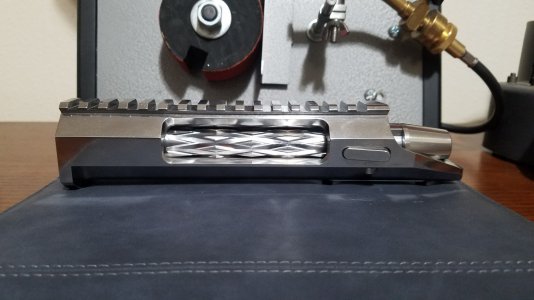That is a sound method. I do have one concern. That is the 100 thou cut. I dont know what caliber you are chambering for but I have found that 50 thou is about the max depth of cut before the flutes on the front of the reamer start to get packed. (over the years I have messed up 2 chambers by going too far and galling them) I do 50 thou for the first few passes and then I drop down to 30 thou to finish. I have the reamer stop set to my chamber size (6mm PPC cartridge) and I keep going until it bottoms out against the back of the barrel. I flush out the chamber and use my go gage to check. I rough up the chamber with some 320 or 280 (what ever is handy), I break the edge on the back of the chamber with the same paper, turn the barrel around, crown it. (90 degree cut) I have to confess that my barrel marking process sucks. I write the date and any other info (hard spots in the chamber, gummy when cutting threads, etc) on the barrel with a marker and the put clear tape over it. Then I head to the range.
Did you notice that there is no measuring until I am done and then just using the go gage and my dial indicator. I love my reamer stop.


